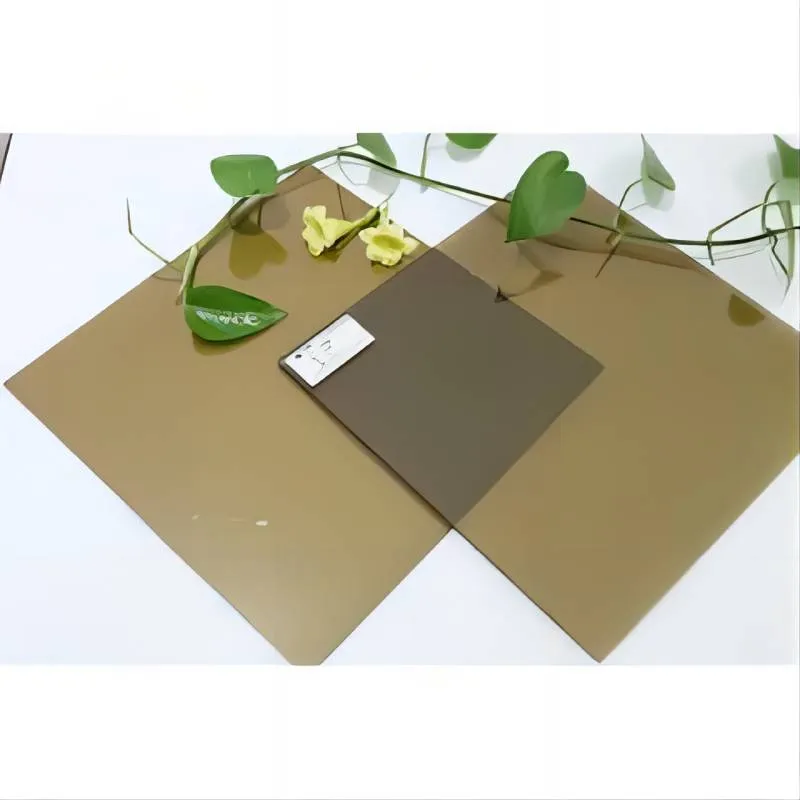Understanding Clear Annealed Float Glass
Clear annealed float glass is a widely utilized type of glass that is renowned for its quality, clarity, and versatility. This article aims to explore the characteristics, manufacturing process, and applications of clear annealed float glass, shedding light on why it is a preferred choice in various industries.
Definition and Characteristics
Clear annealed float glass is a flat glass produced through the float glass process, where molten glass is floated on a bed of molten tin. This method results in glass that is uniform in thickness with exceptionally clear surfaces. The term annealed refers to the controlled cooling process that the glass undergoes, which reduces internal stresses, making it less prone to breaking or shattering.
One of the standout features of clear annealed float glass is its unrivaled optical clarity. It allows for the maximum transmission of light, making it ideal for applications where transparency is essential. Additionally, its smooth surface can be easily treated for various finishes, such as polishing or coating, enhancing its aesthetic appeal and functional properties.
Manufacturing Process
The manufacturing of clear annealed float glass begins with raw materials, including silica sand, soda ash, and limestone, which are melted together at high temperatures. The molten glass is then poured onto a molten tin bath, where it spreads out and forms a flat surface. This float process not only provides a uniform thickness but also results in a seamless and smooth finish, free from distortions.
clear annealed float glass
Once the glass reaches the desired thickness, it undergoes a controlled cooling process (annealing), which is crucial for relieving internal stresses. This step ensures the glass is strong and durable, capable of withstanding various environmental conditions. After annealing, the glass is cut into sheets of various sizes, ready for distribution and application.
Applications
Clear annealed float glass finds a wide variety of applications across different sectors. One of the most common uses is in the construction industry, where it is utilized for windows, doors, and facades. Its clarity and visual appeal enhance the architectural aesthetics of buildings, while also allowing natural light to penetrate indoor spaces.
In the automotive industry, clear annealed float glass is used for windshields and other window components, providing visibility and safety for drivers and passengers. Its ability to be treated for additional properties, such as UV protection and thermal insulation, further enhances its functionality in these applications.
Moreover, clear annealed float glass is also prevalent in the production of mirrors, display cases, and furniture. It can be easily coated or treated to achieve desired finishes, making it a versatile material in design and décor.
Conclusion
In summary, clear annealed float glass is a remarkable material that combines clarity, durability, and versatility. Its production through the float glass process results in a high-quality product that is suitable for a multitude of applications. As industries continue to evolve, the demand for clear annealed float glass remains strong, driven by its functional and aesthetic attributes. Whether in construction, automotive, or design, this glass continues to play a crucial role in modern society.
 Afrikaans
Afrikaans  Albanian
Albanian  Amharic
Amharic  Arabic
Arabic  Armenian
Armenian  Azerbaijani
Azerbaijani  Basque
Basque  Belarusian
Belarusian  Bengali
Bengali  Bosnian
Bosnian  Bulgarian
Bulgarian  Catalan
Catalan  Cebuano
Cebuano  Corsican
Corsican  Croatian
Croatian  Czech
Czech  Danish
Danish  Dutch
Dutch  English
English  Esperanto
Esperanto  Estonian
Estonian  Finnish
Finnish  French
French  Frisian
Frisian  Galician
Galician  Georgian
Georgian  German
German  Greek
Greek  Gujarati
Gujarati  Haitian Creole
Haitian Creole  hausa
hausa  hawaiian
hawaiian  Hebrew
Hebrew  Hindi
Hindi  Miao
Miao  Hungarian
Hungarian  Icelandic
Icelandic  igbo
igbo  Indonesian
Indonesian  irish
irish  Italian
Italian  Japanese
Japanese  Javanese
Javanese  Kannada
Kannada  kazakh
kazakh  Khmer
Khmer  Rwandese
Rwandese  Korean
Korean  Kurdish
Kurdish  Kyrgyz
Kyrgyz  Lao
Lao  Latin
Latin  Latvian
Latvian  Lithuanian
Lithuanian  Luxembourgish
Luxembourgish  Macedonian
Macedonian  Malgashi
Malgashi  Malay
Malay  Malayalam
Malayalam  Maltese
Maltese  Maori
Maori  Marathi
Marathi  Mongolian
Mongolian  Myanmar
Myanmar  Nepali
Nepali  Norwegian
Norwegian  Norwegian
Norwegian  Occitan
Occitan  Pashto
Pashto  Persian
Persian  Polish
Polish  Portuguese
Portuguese  Punjabi
Punjabi  Romanian
Romanian  Russian
Russian  Samoan
Samoan  Scottish Gaelic
Scottish Gaelic  Serbian
Serbian  Sesotho
Sesotho  Shona
Shona  Sindhi
Sindhi  Sinhala
Sinhala  Slovak
Slovak  Slovenian
Slovenian  Somali
Somali  Spanish
Spanish  Sundanese
Sundanese  Swahili
Swahili  Swedish
Swedish  Tagalog
Tagalog  Tajik
Tajik  Tamil
Tamil  Tatar
Tatar  Telugu
Telugu  Thai
Thai  Turkish
Turkish  Turkmen
Turkmen  Ukrainian
Ukrainian  Urdu
Urdu  Uighur
Uighur  Uzbek
Uzbek  Vietnamese
Vietnamese  Welsh
Welsh  Bantu
Bantu  Yiddish
Yiddish  Yoruba
Yoruba  Zulu
Zulu 

